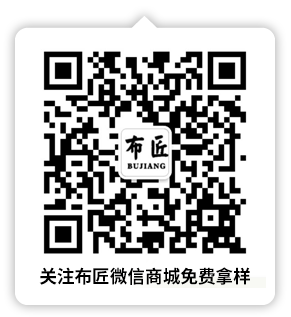服务热线
13857525666


1. water pulp printing process
Water pulp printing process is a basic printing process in the screen printing industry, which can be printed on cotton, polyester, hemp and so on, almost all of the light background fabrics, widely used. It works like a dye, except that it "dyes" an area of the fabric to the desired color. Therefore, this process can not be applied to the fabric with deep background color. The advantages of water slurry printing process are wide application, good color fastness and relatively low price. The limitation of water printing process is that it cannot be applied to all dark fabrics.
2. Printing process of glue paste
The printing process USES special chemical gels and dyes to mix seamlessly. Dye through the action of gel medium, firmly adhere to the fabric, paste printing process to overcome the limitations of water paste printing. It can be printed on cotton, hemp, viscose, polyester, polyamide, polypropylene, polyvinyl chloride and various fiber blended fabrics. It can also be printed on leather, artificial leather and other materials. It can be used for fluorescent printing, ink-jet printing, burnt-out printing, electrostatic flocking printing and other printing processes. Glue printing process is widely used, color beautiful, high degree of reduction, but its printing process is more complex than water printing process, the cost is relatively high.
After the appearance of glue paste and its wide application in water paste, because of its good coverage, the dark clothes can be printed with any light color, and there is a certain gloss and three-dimensional sense, making the ready-to-wear look more high-grade, so it can be quickly popularized, almost every printed T-shirt can use it. But because it has certain hardness, so not suitable for large area of the field pattern, large area of the pattern is good or water pulp to print, and then embellish some glue pulp, so that can solve the problem of large area of glue paste hard, and can highlight the pattern of the sense of depth; Still have a kind of method is the spot design of large area stealthily empty, make the effect that break, but wear all the time rise to have a bit hard hard, still be water, glue slurry is united in wedlock so the problem that solves large area printing is better.
3. foaming printing process
Foaming printing is also called the stereoscopic printing, foam printing process on the basis of the rubber paste printing process and the principle of it is to be in a certain proportion adding several kinds of mucilage printing dye chemicals, high expansion coefficient of the printing after drying with 200-300 degrees high temperature foaming, similar "relief" stereo effect, foam printing process visual effect of the request of substrates including foam is dazzing. The advantages of foaming printing printing process is a strong sense of three-dimensional, printing surface prominent, expansion. Widely used in cotton, nylon cloth and other materials.
Foam printing paste has grown into the physical foaming pulp and chemical pulp foaming two big series, physical foaming pulp mainly contains microcapsule preparation, storage in the microcapsule preparation has a low boiling point of organic solvent, when temperature increases, the micro capsule preparation of organic solvent gasification quickly, the micro capsule ballooning, swell the micro capsule mutual extruding, cause irregular distribution of overlap, so the surface is rugged, so also known as the raising of printing. There are two types of chemical foaming pulp: one is thermoplastic resin and foaming agent, the other is polyurethane and solvent thickener composed of the color paste. But the solvent in printing printing paste on the latter fabric should be recycled, which brings certain difficulty to the printing factory.
4. Flocking printing process
Electrostatic flocking printing technology is one of the three-dimensional printing technology. The principle is that the high-strength compound resin bond brightener is transferred to the substrate surface with the silk screen containing the required flower position, and then the fiber villi is charged through a high voltage electrostatic field of hundreds of thousands of volts. Make villi perpendicular and even fly "bump" on adhesive, in the surface of the fabric "shop" on a layer of villi, and then by high temperature solidification molding. It is widely used in sofa fabric, packaging box, shoe fabric, decoration, toys, industrial electrical parts protection and other aspects. The pile is covered on the surface of the object, which is not restricted by the shape and size of the plant. The product printed by flocking technology has a strong three-dimensional feeling, bright color, soft touch, non-defuzz and anti-friction. Cotton cloth, silk hemp, leather, nylon cloth, all kinds of PVC, denim, rubber, sponge, metal, foam, plastic, resin no cloth and so on can be printed.
The binder selected by flocking plays an important role in printing and dyeing post - processing industry. Commonly used adhesives are classified as diplomatic binder and self - crosslinking binder. In its molecules, the diplomatic bond binder contains carboxyl group (-c00h) or amide group (-c-nh2), amino group (-nh3) and other groups that can cross-link with the functional groups of the additional crosslinking agent. When forming the film, it can react with the external adhesive to form a netted skin film, so as to fix the villi on the substrate.
The choice of adhesive should pay attention to the following points: 1. 2. After flocking, it feels soft, and the surface has appropriate film-forming property, which is conducive to flocking; 3. The viscosity is moderate, which is convenient for spraying, coating and scraping on the grey cloth; 4. Good chemical stability, good weather resistance and washing resistance; 5. Easy to operate, a small amount of viscosity adjuster can be added to adjust viscosity; 6, non-toxic and harmless, not easy to burn.